Hyundai i30 Wagon vs Nissan Juke - Differences and prices compared
Costs and Efficiency:
When it comes to price and running costs, the biggest differences usually appear. This is often where you see which car fits your budget better in the long run.
Nissan Juke has a somewhat advantage in terms of price – it starts at 21400 £, while the Hyundai i30 Wagon costs 24800 £. That’s a price difference of around 3463 £.
Fuel consumption also shows a difference: Nissan Juke manages with 4.70 L and is therefore evident more efficient than the Hyundai i30 Wagon with 5.70 L. The difference is about 1 L per 100 km.
Engine and Performance:
Power, torque and acceleration are the classic benchmarks for car enthusiasts – and here, some clear differences start to show.
When it comes to engine power, the Nissan Juke has a hardly perceptible edge – offering 143 HP compared to 140 HP. That’s roughly 3 HP more horsepower.
In acceleration from 0 to 100 km/h, the Hyundai i30 Wagon is barely noticeable quicker – completing the sprint in 9.80 s, while the Nissan Juke takes 10.10 s. That’s about 0.30 s faster.
In terms of top speed, the Hyundai i30 Wagon performs barely noticeable better – reaching 197 km/h, while the Nissan Juke tops out at 180 km/h. The difference is around 17 km/h.
There’s also a difference in torque: Hyundai i30 Wagon pulls noticeable stronger with 253 Nm compared to 200 Nm. That’s about 53 Nm difference.
Space and Everyday Use:
Whether family car or daily driver – which one offers more room, flexibility and comfort?
Seats: offers more seating capacity – vs .
In curb weight, Nissan Juke is hardly perceptible lighter – 1274 kg compared to 1316 kg. The difference is around 42 kg.
In terms of boot space, the Hyundai i30 Wagon offers noticeable more room – 602 L compared to 422 L. That’s a difference of about 180 L.
In maximum load capacity, the Hyundai i30 Wagon performs evident better – up to 1650 L, which is about 345 L more than the Nissan Juke.
When it comes to payload, Hyundai i30 Wagon somewhat takes the win – 524 kg compared to 427 kg. That’s a difference of about 97 kg.
Who wins the race?
The Hyundai i30 Wagon proves to be wins by a narrow margin and therefore becomes our DriveDuel Champion!
Hyundai i30 Wagon is the better all-rounder in this comparison.
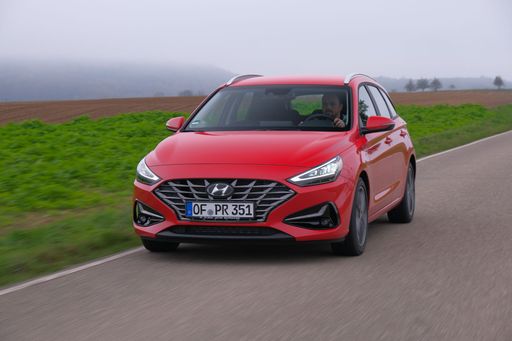 @ Hyundai Motor Company
@ Hyundai Motor Company
Hyundai i30 Wagon
Costs and Consumption
View detailed analysis
Engine and Performance
View detailed analysis
Dimensions and Body
View detailed analysis
Hyundai i30 Wagon
The Hyundai i30 Wagon is a practical family hauler that pairs roomy, sensible packaging with clean, modern lines and a surprisingly composed chassis. Comfortable, well-equipped and priced to make rivals sweat, it quietly ticks the boxes for daily life and weekend escapes while still managing a little grin on twisty roads.
details @ Hyundai Motor Company
@ Hyundai Motor Company
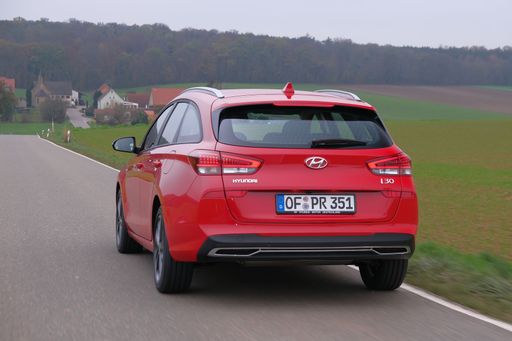 @ Hyundai Motor Company
@ Hyundai Motor Company
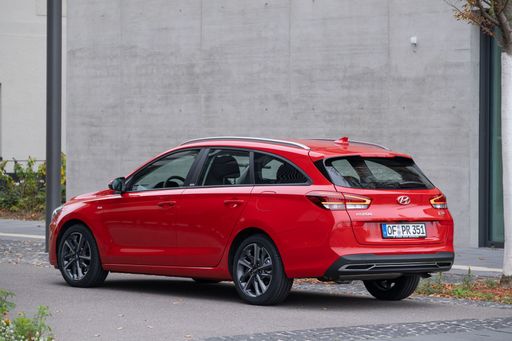 @ Hyundai Motor Company
@ Hyundai Motor Company
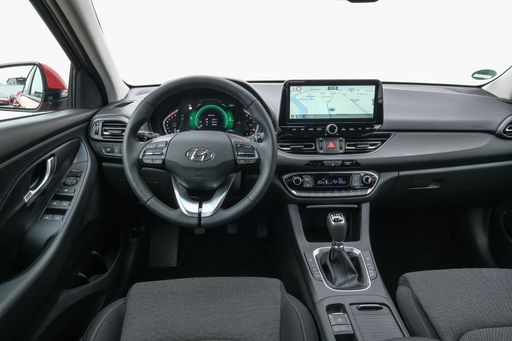 @ Hyundai Motor Company
@ Hyundai Motor Company
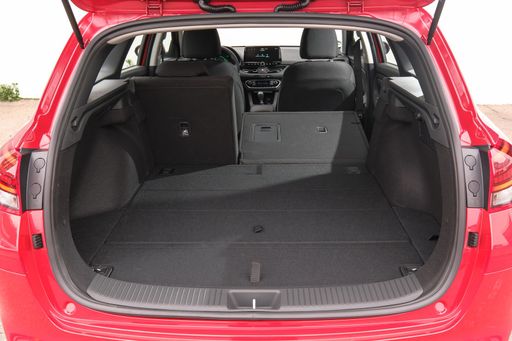 @ Hyundai Motor Company
@ Hyundai Motor Company
Nissan Juke
The Nissan Juke is a pocket-sized crossover that refuses to blend in, with quirky styling and a cheeky stance that turns heads at every traffic light. It’s ideal for shoppers who value personality and nimble urban driving over maximum practicality, delivering surprising pep and a well-equipped feel for everyday fun.
details @ Nissan Motor Corporation
@ Nissan Motor Corporation
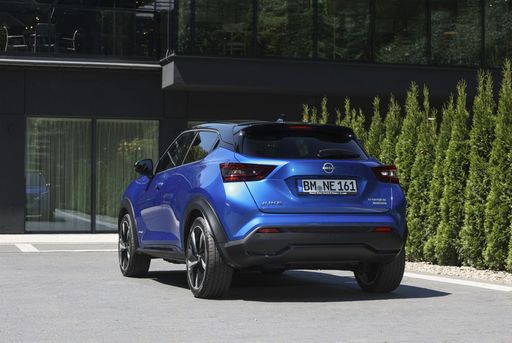 @ Nissan Motor Corporation
@ Nissan Motor Corporation
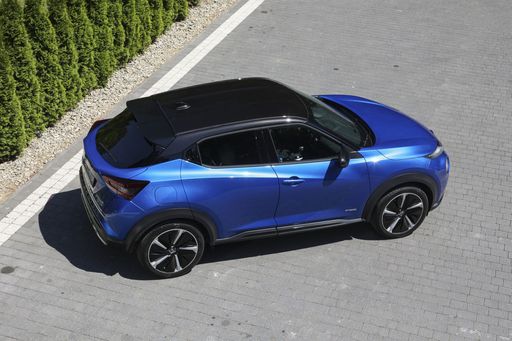 @ Nissan Motor Corporation
@ Nissan Motor Corporation
 @ Nissan Motor Corporation
@ Nissan Motor Corporation
 @ Hyundai Motor Company
@ Hyundai Motor Company
|
 @ Nissan Motor Corporation
@ Nissan Motor Corporation
|
|
|
|
Costs and Consumption |
|
|---|---|
|
Price
24800 - 30100 £
|
Price
21400 - 30100 £
|
|
Consumption L/100km
5.7 - 6 L
|
Consumption L/100km
4.7 - 6 L
|
|
Consumption kWh/100km
-
|
Consumption kWh/100km
-
|
|
Electric Range
-
|
Electric Range
-
|
|
Battery Capacity
-
|
Battery Capacity
0.60 kWh
|
|
co2
130 - 136 g/km
|
co2
107 - 136 g/km
|
|
Fuel tank capacity
50 L
|
Fuel tank capacity
46 L
|
Dimensions and Body |
|
|---|---|
|
Body Type
Estate
|
Body Type
SUV
|
|
Seats
5
|
Seats
5
|
|
Doors
5
|
Doors
5
|
|
Curb weight
1316 - 1461 kg
|
Curb weight
1274 - 1405 kg
|
|
Trunk capacity
602 L
|
Trunk capacity
354 - 422 L
|
|
Length
4585 mm
|
Length
4210 mm
|
|
Width
1795 mm
|
Width
1800 mm
|
|
Height
1475 mm
|
Height
1593 mm
|
|
Max trunk capacity
1650 L
|
Max trunk capacity
1237 - 1305 L
|
|
Payload
439 - 524 kg
|
Payload
405 - 427 kg
|
Engine and Performance |
|
|---|---|
|
Engine Type
Petrol, Petrol MHEV
|
Engine Type
Petrol, Full Hybrid
|
|
Transmission
Manuel, Automatic
|
Transmission
Manuel, Automatic
|
|
Transmission Detail
Manual Gearbox, Dual-Clutch Automatic
|
Transmission Detail
Manual Gearbox, Dual-Clutch Automatic, Automatic Gearbox
|
|
Drive Type
Front-Wheel Drive
|
Drive Type
Front-Wheel Drive
|
|
Power HP
100 - 140 HP
|
Power HP
114 - 143 HP
|
|
Acceleration 0-100km/h
9.8 - 13.3 s
|
Acceleration 0-100km/h
10.1 - 11.8 s
|
|
Max Speed
178 - 197 km/h
|
Max Speed
166 - 180 km/h
|
|
Torque
172 - 253 Nm
|
Torque
200 Nm
|
|
Number of Cylinders
3 - 4
|
Number of Cylinders
3 - 4
|
|
Power kW
74 - 103 kW
|
Power kW
84 - 105 kW
|
|
Engine capacity
998 - 1482 cm3
|
Engine capacity
999 - 1598 cm3
|
General |
|
|---|---|
|
Model Year
2024
|
Model Year
2024
|
|
CO2 Efficiency Class
D, E
|
CO2 Efficiency Class
D, E, C
|
|
Brand
Hyundai
|
Brand
Nissan
|
What drivetrain options does the Hyundai i30 Wagon have?
Available configurations include Front-Wheel Drive.
The prices and data displayed are estimates based on German list prices and may vary by country. This information is not legally binding.
